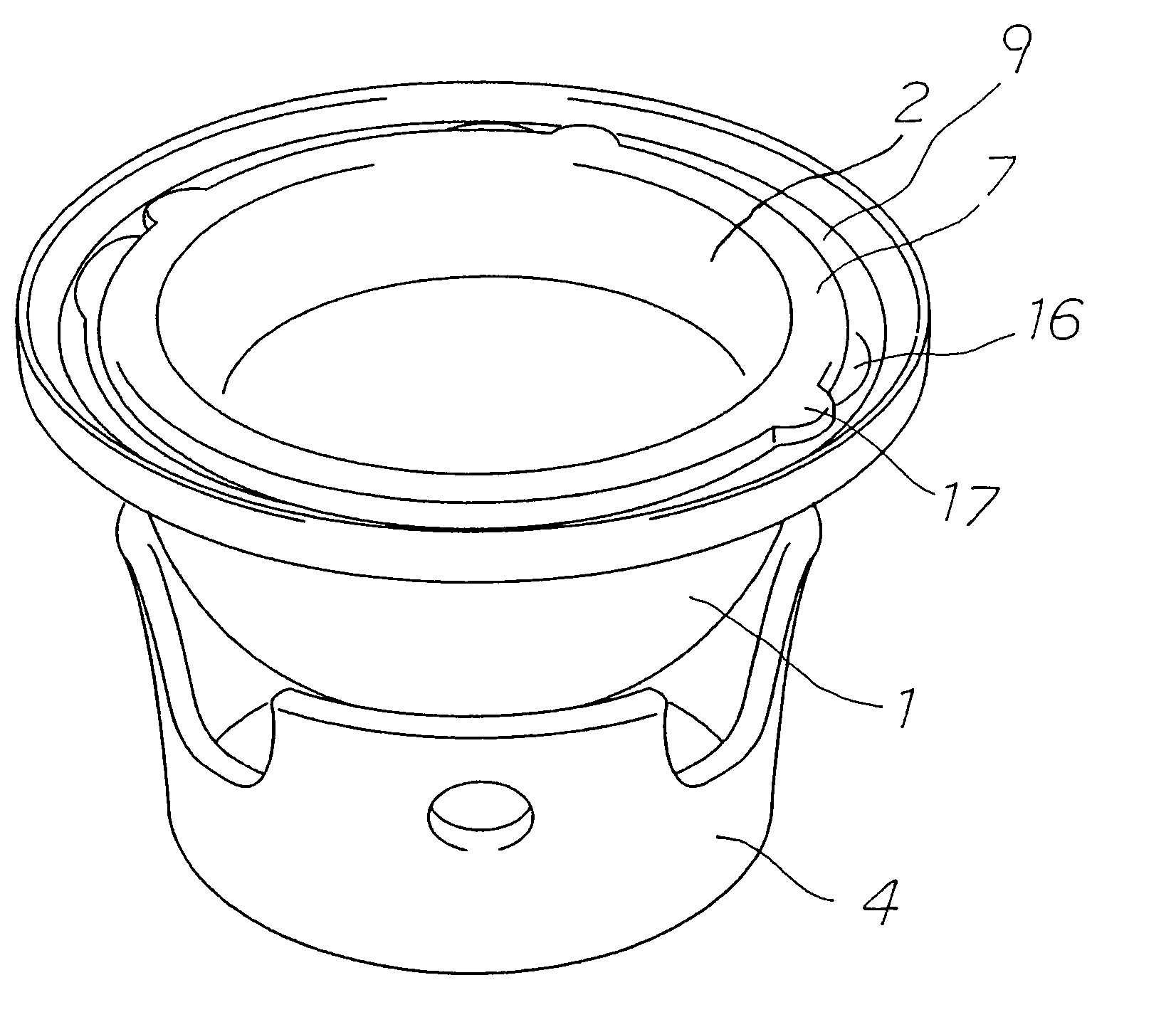Cooking double boiler
a double boiler and steam boiler technology, applied in steam-heated kettles, household appliances, kitchen equipment, etc., can solve the problems of excessive heating of soymilk in contact with the inner pan, gradual increase in viscosity that prevents convection, and excessive curding of soymilk, etc., to achieve uniform curding, short time, and easy supply
- Summary
- Abstract
- Description
- Claims
- Application Information
AI Technical Summary
Benefits of technology
Problems solved by technology
Method used
Image
Examples
first embodiment
[0030]FIGS. 1 to 3 illustrate a first embodiment according to a first invention. As illustrated in FIG. 3, the cooking double boiler according to the present invention is comprised of an outer pan 1, an inner pan 2 and an upper lid 3. While all of the three members in the present embodiment are made of ceramics that exhibit favorable heat resistance, the material is not particularly limited to this and these members may alternatively be formed of metals such as aluminum cast material or stainless steel.
[0031]A small amount of water is poured into a bottom portion of the outer pan 1, and the pan is placed onto a cooking stove 4 as illustrated in FIGS. 1 and 2 so as to generate water vapor. It is preferable that a stepped portion 5 is formed on an inner surface of the bottom portion of the outer pan 1 indicative of the amount of poured water. When making tofu for one person, a preferable amount of water of approximately 50 ml will be satisfactory. Accordingly, a small-sized piece of s...
second embodiment
[0039]FIG. 4 illustrates the first invention, wherein a partition 13 is formed in the center of the inner pan 2. When using such an inner pan 2, it is possible to make red-and white-tofu upon putting some red-colored soymilk into one of the spaces, which is suitable for festive gatherings such as wedding parties. In addition thereto, the shape of the inner pan 2 is not limited to a circular form alone but may also be shaped in a form of a heart.
third embodiment
[0040]FIG. 5 illustrates the first invention in which a pair of grips 14 are provided at the flange 7 of the inner pan 2 such that the heated inner pan 2 can be safely taken out. While the grips 14 can be integrally formed with the inner pan 2 as illustrated in ①, it is also possible to provide them as separate members as in ② and ③. When arranging the grips as separate members, it is preferable to select a material of low thermal conductivity such as fibered strings. It goes without saying that the grips 14 shall be arranged so as not to interfere the upper lid 3.
PUM
 Login to View More
Login to View More Abstract
Description
Claims
Application Information
 Login to View More
Login to View More - R&D
- Intellectual Property
- Life Sciences
- Materials
- Tech Scout
- Unparalleled Data Quality
- Higher Quality Content
- 60% Fewer Hallucinations
Browse by: Latest US Patents, China's latest patents, Technical Efficacy Thesaurus, Application Domain, Technology Topic, Popular Technical Reports.
© 2025 PatSnap. All rights reserved.Legal|Privacy policy|Modern Slavery Act Transparency Statement|Sitemap|About US| Contact US: help@patsnap.com



